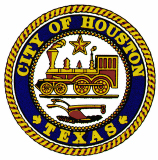On 19th Street, one of Houston’s most enduring strips of shops and restaurants, there is a vacant lot tucked between two stores, about a block from the landmark “Heights” sign.
When developers recently expressed interest in putting a new building there, however, they suffered a setback.
Houston’s planning codes, written in the 1990s with automobiles in mind, meant the developers would have to put the new building 25 feet back from the road, set awkwardly behind the street-side strip of storefronts.
The city planning commission granted them a reprieve from the rule, but the episode illustrated how Houston’s code served as an impediment, not a spark, for so-called “walkable” development, said Bill Baldwin, a real estate agent and member of the planning commission.
City council on Wednesday took a first step toward changing that, unanimously approving ordinances aimed at making pockets of Houston more friendly to pedestrians and moving the city away from its car-centric planning code. The new regulations only apply to new buildings and redevelopment in certain parts of the city.
In those areas, the ordinances will bring buildings — not parking lots — closer to the street, widen sidewalks, and reduce or altogether eliminate the number of parking spots developers are required to offer.
[…]
The ordinances create two distinct programs: areas with a ““Walkable Places” designation, where the city seeks to foster pedestrian-friendly development; and areas in the “Transit-Oriented Development” program, where the city hopes to bring the same principles to most streets that fall within a half-mile of a bus or train station.
While the underlying regulations are similar, the Walkable Places” program initially takes shape in three pilot projects along Emancipation Avenue, Midtown, and Hogan and Lorraine Streets in the Near Northside. Other areas can pursue a “Walkable Places” designation if a majority of property owners support it. City council will have final say over all such designations.
The “Transit-Oriented Development” program will apply to city-designated areas across Houston that are close to transit stops.
For the streets covered by either program, the ordinances undo many of the automobile-centered rules adopted in the 1990s. For example, under those rules, all development on major streets must be set back 25 feet from the road, businesses must offer a prescribed number of parking spaces for customers, and sidewalks must be 5 feet wide.
The new rules waive the set-back requirement, bringing buildings closer to the street and pushing parking lots to the side or behind new buildings. The transit-oriented development ordinance cuts or eliminates parking space requirements.
A preview version of the story from Wednesday morning is here. You should follow the links in the excerpt to see more about the program. It will take awhile for the effects to be truly visible, but the potential is great, and there are a lot more places that need this kind of intervention – I for one would put Washington Avenue at the top of the list of corridors to be added to the existing list. Though this story begins with a development on 19th Street in the Heights, as of today none of the Heights is in scope. Which is fine, as most of the commercial parts of the neighborhood – think White Oak, 11th, and 19th/20th – are pretty good with sidewalks to begin with. I guess what I’m saying is, I want to see this spread to more of the city. It’s a little crazy to think that we had these anti-pedestrian rules in the first place, but that was Houston in the 90s for you. Would have been great to do this kind of unwinding a long time ago, but better late than never.


Where is the landmark “Heights” sign? I don’t believe I ever saw it. Maybe they’re thinking of “Hollywood?” Anyhow, I think the lot they’re writing about was once the unnamed store that sold all kinds of scrap metal and spilled out onto the sidewalk, on the few days that it actually opened. It only opened on the weekends, and, right now, the owner would be out of town, fleeing the hottest months of July, August, and September, only to return in October, and quickly close the shop again, because he would spend most of the autumn at the Renaissance Festival. I do agree that it would be strange to have a new store with the storefront behind the row on W. 19th, but that doesn’t necessarily have to be a detriment to business, if you are creative.
Sounds all well and good until the I-45 development plan affects Hogan street and Emancipation Ave. Why does the city pay for a study for an area that is going to be taken over by eminent domain? At this point in time it would be foolish for anyone to develop there because it is unknown how I-45 is going to take over. Maybe the plan is everyone developing the I-45 corridor will have to walk to work with their tools.
On a related topic, not covered in this post, the city is going to consider an ordinance prohibiting cars from parking in bicycle lanes. Comments can be sent to parking@houstontx.gov, by Calling 832.393.8690, or mail ParkHouston, 2020 McKinney, Houston, TX 77003.